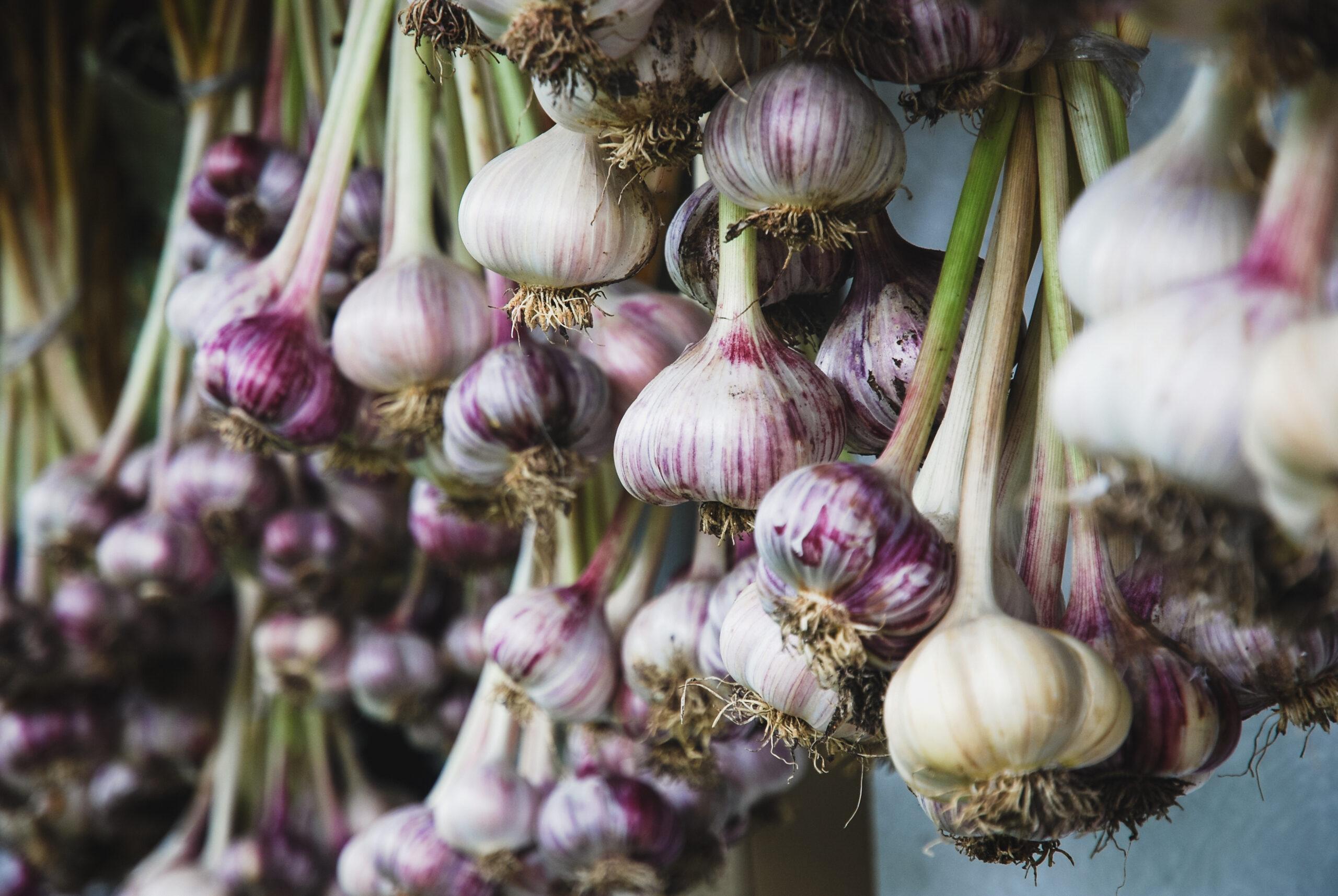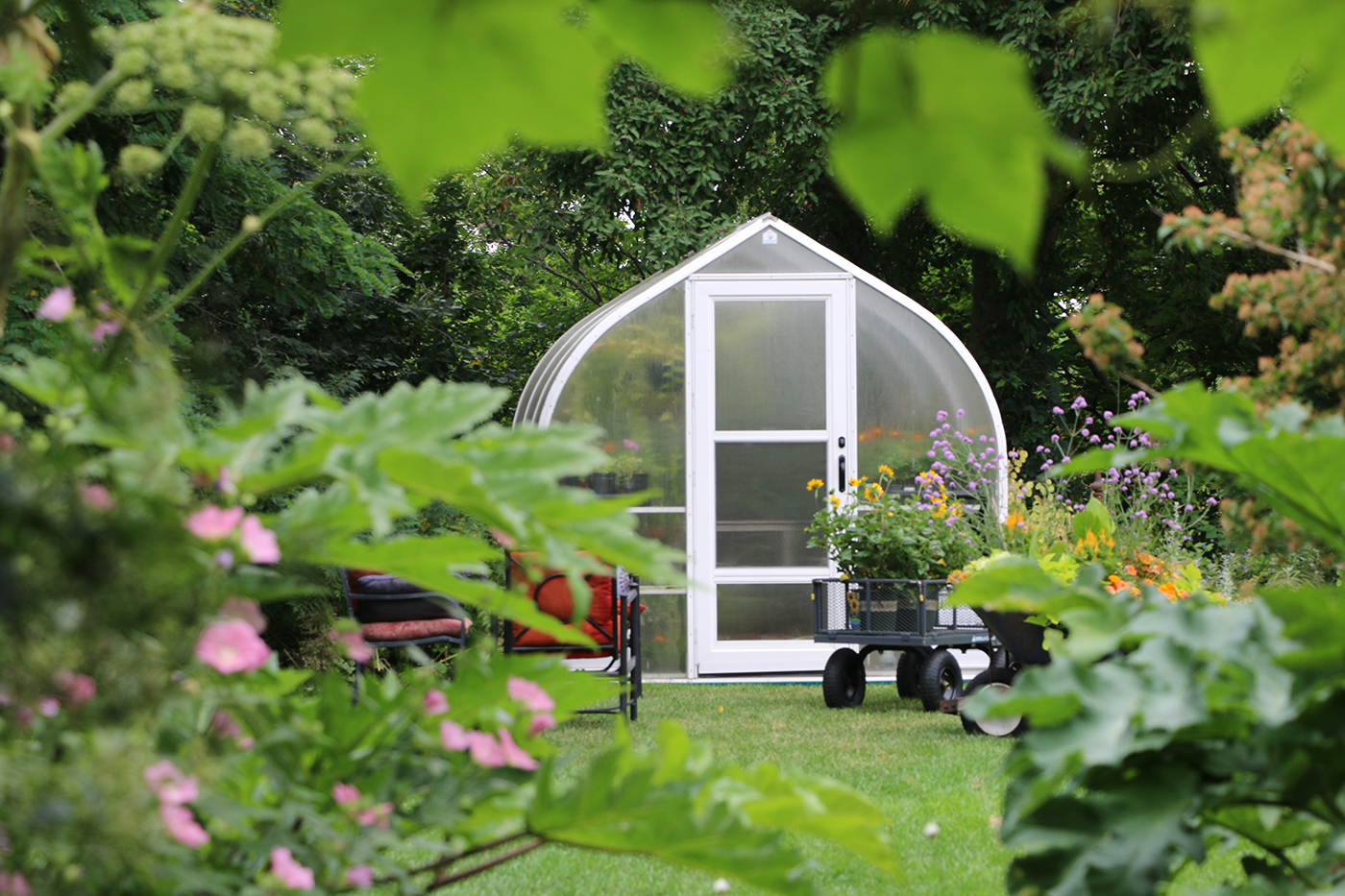There’s just something about harvesting a great crop of fresh garlic! As I’ve said in the past, cooking is not one of my passions (though in fairness, I’m a great cleaner-upper when other people are kind enough to feed me.)
So, some garlic for my own kitchen? Sure. But garlic to enjoy giving away? You bet! When mid-summer rolls around and the leaves of my thriving garlic plants begin to brown down, it’s game on! Those fading leaves signal me to get ready to dig, as I recall the faces of friends and relatives who do like to cook and who will light up when I share the harvest with them.
I’m hoping for a banner year!
With all the rain we’ve had this year, my garlic is almost hip-high – about a foot taller than normal! I have fingers and toes crossed for a great harvest.
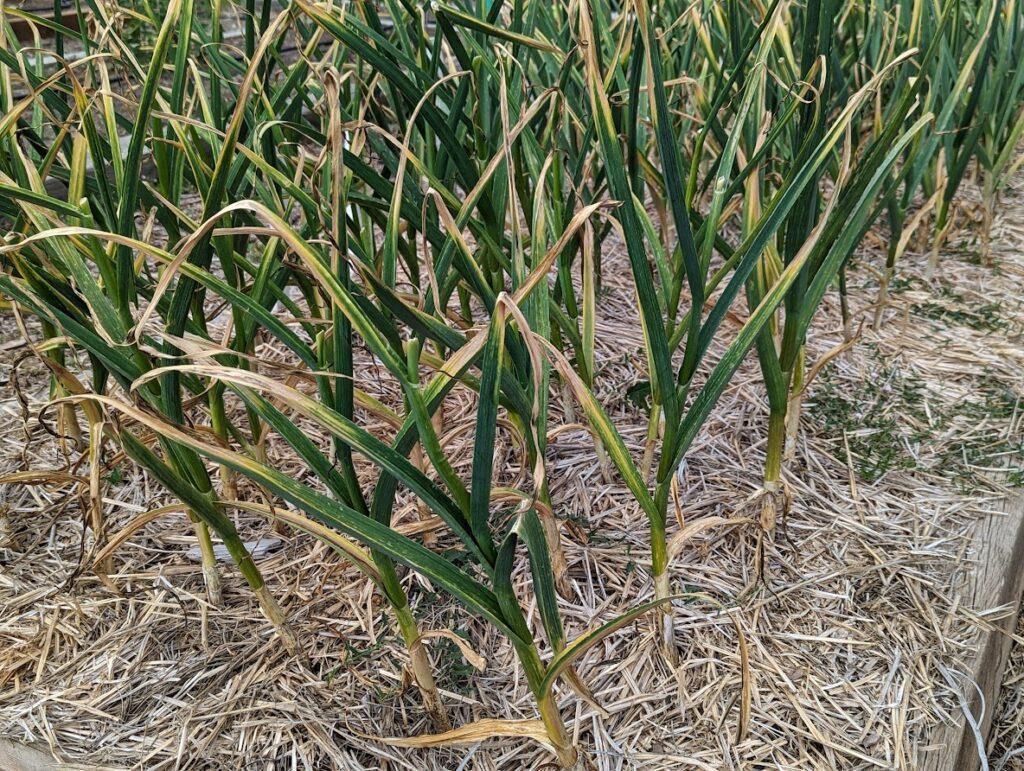
Usually by mid-July, a few of the lowest leaves and some of the leaves at the top of the plant will begin to slightly yellow and then fade to tan. The timing can vary a bit depending on the variety of garlic being grown.
It’s good to remember that each one of those leaves is an extension of one of the papery wrappers around the garlic bulb itself. Harvesting too soon often results in bulbs that aren’t as big as they should be. Harvesting too late means some of the wrappers around the bulb have become so dry that they’ll fall off easily. Having fewer wrappers will decrease the garlic’s shelf life. When I’m not sure if the crop is ready, I’ll gently dig up a bulb and check to see if it has grown to full size.
Easy does it as I dig
When I plant the garlic cloves each fall, I make a point to give them enough room so I’m not damaging the mature bulbs when it’s time to harvest. I generally leave about six inches between each clove and about eight inches between the rows. Even then I still need to be careful not to skewer the bulbs with my garden fork when I begin to dig.
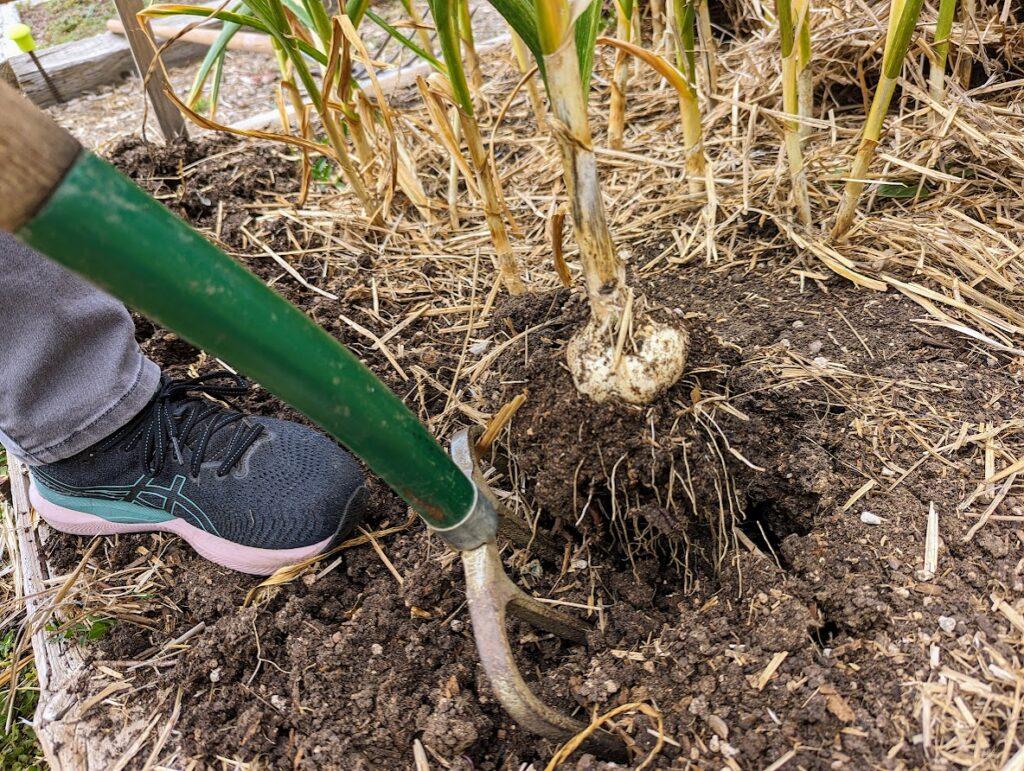
In some regions where the soil is especially loose and light, the garlic can be harvested by pulling on the leaves and stem, then lifting out the entire bulb. That approach generally doesn’t work in our heavier soil here. That’s why I use a garden fork to loosen and lift the soil around each head of garlic, then gently pull out the bulb.
Now’s the time for a little patience
It’s common for bits of soil to stick to the garlic bulbs after they’ve been lifted. I’ll gently remove any loose soil with my thumbs, but I make a point to leave the “stuck on soil” to dry in place. That soil will knock off easily once the bulbs have cured.
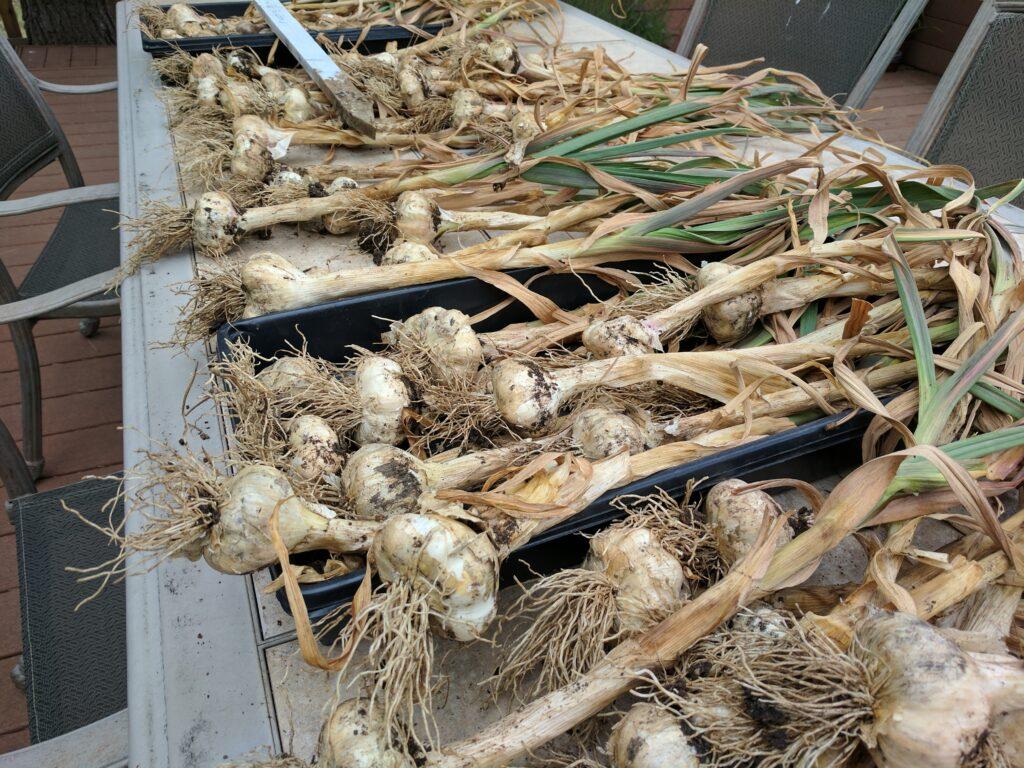
One of the worst mistakes I could make would be to wash off that residual soil. Getting the garlic wet is the last thing I want to do! Moisture could easily trigger mold or other problems as the bulbs are in storage. It’s also tempting to “tidy up” the garlic by trimming off the leaves and roots at this point, but I find it’s best to leave them in place until after the curing process is complete.
So what is “curing” anyway?
Garlic is certainly usable as soon as its harvested, but there are significant advantages to letting it cure properly. Curing is a slow, steady drying-out process that increases both the flavor and the storage life of garlic.
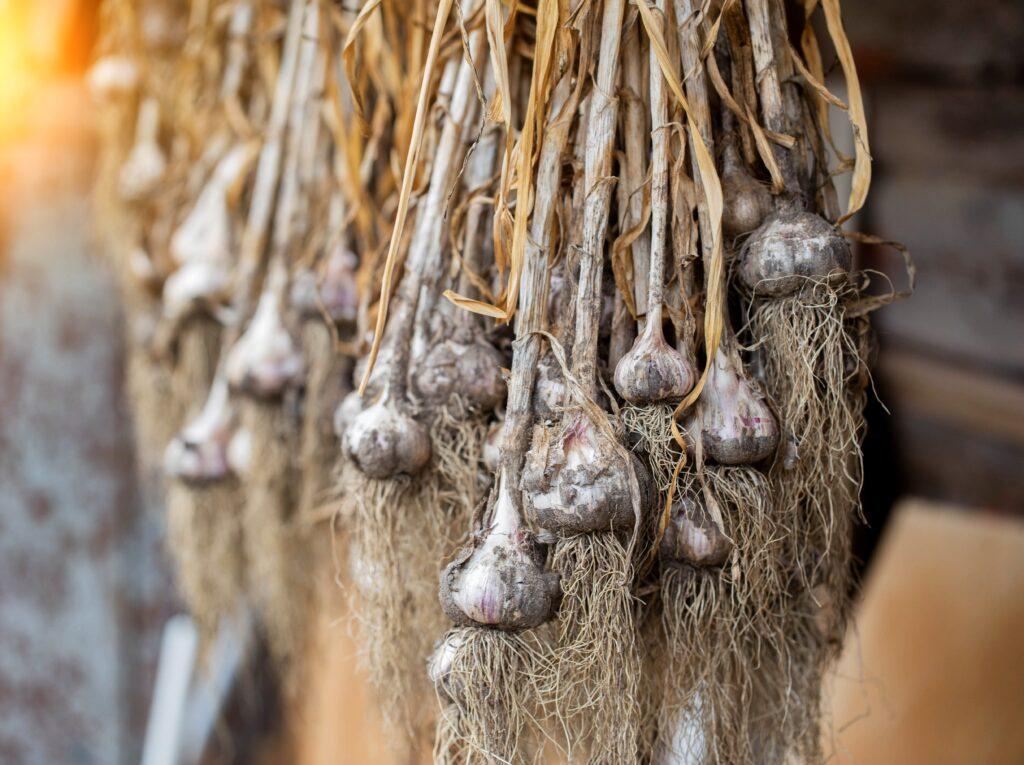
Curing is best done in an airy, dry place out of the sun. Because I grow and harvest a fair bit of garlic, I generally use zip ties to bundle eight or ten plants together by the tops of their leaves, then hang each bundle above head-height in my garage, if it’s not too hot, or in my basement. The curing is finished when all of the leaves and roots have dried out.
Storing the harvested garlic
Garlic stores best in a dark, cool place with decent ventilation. Mesh bags that once held onions or other fruit work quite well. Never put your garlic in the fridge! It will react as if it’s been through a winter chill outdoors and is ready to sprout!
Because different varieties often have different shelf life, keep track of the types of garlic you plant so you know what to expect.
Garlic planting time isn’t far away!
I always make a point of saving the biggest and best garlic bulbs from each summer’s harvest to use as “seed” garlic when it’s time to plant again in the fall. But I don’t stop there!
Tagawa’s wide selection of gourmet garlic is usually available in late September each year. It’s fun to find so many bulbs of garlic with lovely, often exotic names! I’ll be there, trying out some new varieties. I’d love to see you there, too!
Hungry for more on growing garlic?
If this blog has piqued your interest about garlic and you’d like to learn more about both planting and harvesting, check out my two garlic videos on You Tube:
